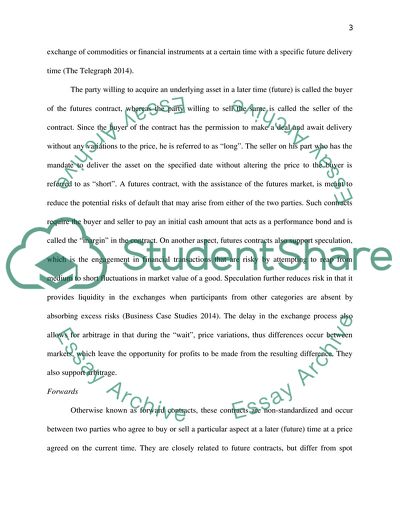Cite this document
(“Futures, forwards and options are used for risk reduction, speculation Essay”, n.d.)
Futures, forwards and options are used for risk reduction, speculation Essay. Retrieved from https://studentshare.org/finance-accounting/1629161-futures-forwards-and-options-are-used-for-risk-reduction-speculation-and-arbitrage-purposes
Futures, forwards and options are used for risk reduction, speculation Essay. Retrieved from https://studentshare.org/finance-accounting/1629161-futures-forwards-and-options-are-used-for-risk-reduction-speculation-and-arbitrage-purposes
(Futures, Forwards and Options Are Used for Risk Reduction, Speculation Essay)
Futures, Forwards and Options Are Used for Risk Reduction, Speculation Essay. https://studentshare.org/finance-accounting/1629161-futures-forwards-and-options-are-used-for-risk-reduction-speculation-and-arbitrage-purposes.
Futures, Forwards and Options Are Used for Risk Reduction, Speculation Essay. https://studentshare.org/finance-accounting/1629161-futures-forwards-and-options-are-used-for-risk-reduction-speculation-and-arbitrage-purposes.
“Futures, Forwards and Options Are Used for Risk Reduction, Speculation Essay”, n.d. https://studentshare.org/finance-accounting/1629161-futures-forwards-and-options-are-used-for-risk-reduction-speculation-and-arbitrage-purposes.


